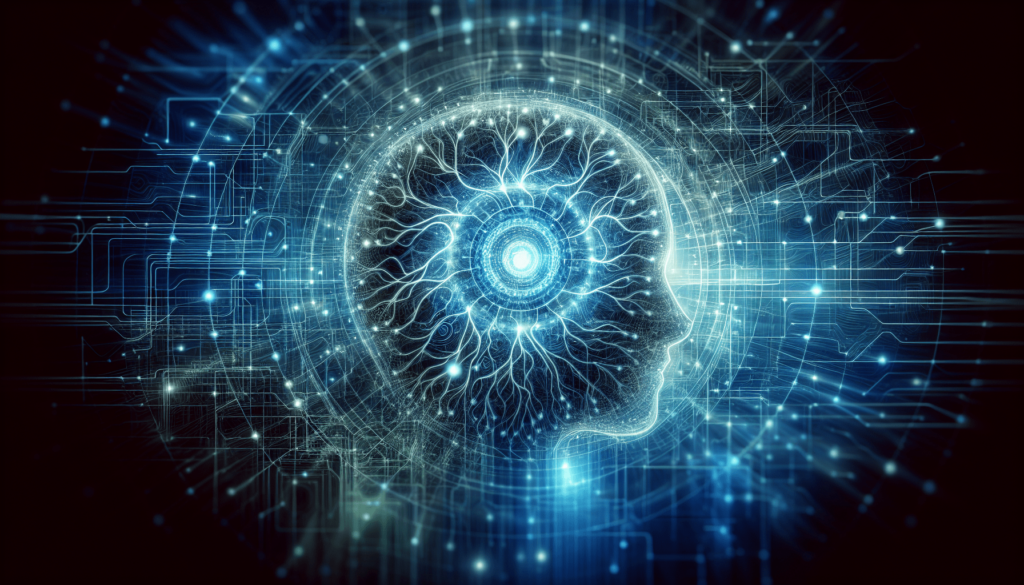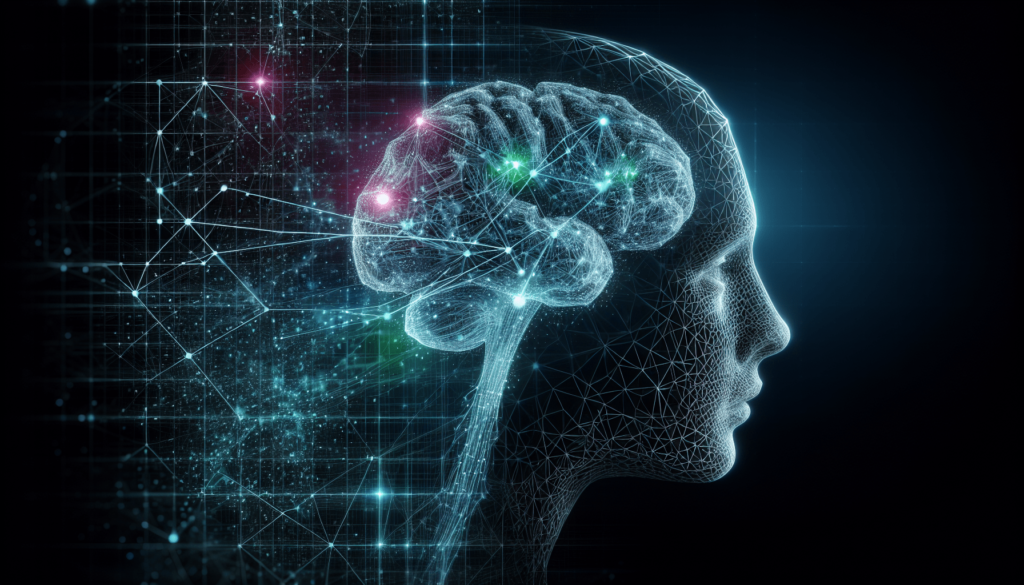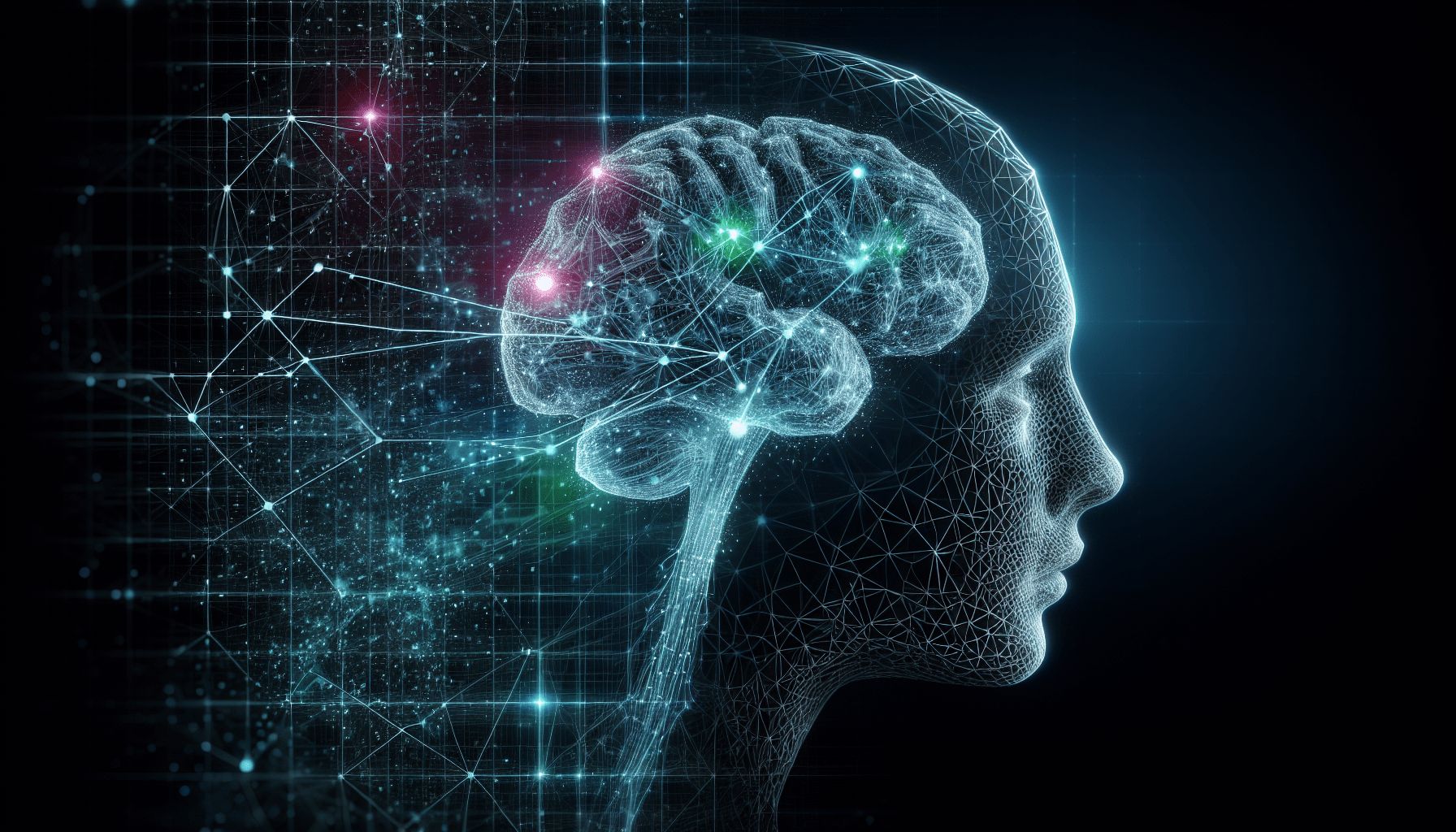Picture a world where machines are not just capable of performing complex tasks, but also possess a level of intelligence that surpasses that of humans. It’s a concept that has captured the imagination of scientists, researchers, and enthusiasts alike. The tantalizing question of whether artificial intelligence (AI) will one day exceed human intelligence is one that fuels debates, inspires groundbreaking research, and ignites our curiosity about the future of technology. As AI continues to advance at an astonishing pace, it begs the question: Will AI, in all its computational might, eventually transcend the limitations of human intelligence?
Background on AI
Definition of AI
Artificial Intelligence, commonly referred to as AI, is a branch of computer science that focuses on the creation of intelligent machines that can perform tasks that would typically require human intelligence. These tasks include speech recognition, problem-solving, learning, decision-making, and more. AI aims to develop computer systems that can analyze and interpret data, understand natural language, and adapt and improve their performance based on experience.
Brief history of AI development
The concept of AI has been in existence for decades, with early pioneers laying the foundation for its development. The term “artificial intelligence” was first coined by John McCarthy in 1956. Since then, significant progress has been made in the field. The 1950s and 1960s saw the emergence of early AI programs that focused on problems like logical reasoning and game-playing. In the 1990s, advancements in machine learning and neural networks reinvigorated AI research. Today, AI technologies continue to evolve rapidly, exploring new frontiers in robotics, natural language processing, and data analysis.
Current Capabilities of AI
Artificial Narrow Intelligence (ANI)
AI systems with narrow intelligence, also known as Artificial Narrow Intelligence (ANI), are designed to excel in specific tasks but lack the ability to generalize beyond those tasks. ANI operates within a limited domain and focuses on solving well-defined problems. Examples of ANI technologies are voice assistants like Siri and Alexa, recommendation systems in e-commerce, and image recognition software. These systems leverage machine learning algorithms and large datasets to provide accurate results within their predefined scope.
Examples of ANI applications
ANI applications have become increasingly prevalent in various domains. In healthcare, ANI is utilized for medical image analysis, aiding in the detection of abnormalities and diseases. In finance, ANI algorithms analyze vast amounts of data to predict stock market trends and optimize trading strategies. ANI systems are also employed in transportation systems to optimize traffic flow and improve logistics. Additionally, ANI plays a significant role in the entertainment industry, where AI algorithms are used to personalize content recommendations and enhance user experiences.
Limitations of ANI
While ANI systems have demonstrated remarkable capabilities in specific areas, they are constrained by their narrow focus. ANI lacks the ability to transfer knowledge from one domain to another, limiting their adaptability and general problem-solving capabilities. Additionally, ANI may struggle to understand context and nuances, leading to errors in decision-making. The development of Artificial General Intelligence (AGI) aims to overcome these limitations and create AI systems that possess human-like intelligence.

Artificial General Intelligence (AGI)
Definition of AGI
Artificial General Intelligence (AGI), also referred to as Strong AI, refers to the hypothetical development of AI systems that possess the same level of intelligence and cognitive abilities as human beings. AGI is characterized by its ability to understand, learn, and apply knowledge across a wide array of domains and tasks. Unlike ANI, which focuses on specific problem-solving, AGI aims to emulate the breadth and depth of human intelligence.
Theoretical capabilities of AGI
AGI holds the potential to revolutionize virtually every aspect of human existence. With its ability to understand and reason like humans, AGI could contribute significantly to scientific research, creative endeavors, and problem-solving on a global scale. AGI might assist in discovering breakthroughs in medicine, providing novel solutions to complex societal challenges, and advancing our understanding of the universe. Theoretical capabilities of AGI extend into areas such as computational creativity, emotional intelligence, and consciousness, although these aspects remain highly speculative.
Challenges in developing AGI
The development of AGI is an immensely complex undertaking, filled with numerous challenges. One primary hurdle lies in achieving human-level cognitive abilities, as the intricacies of human intelligence are still not fully understood. AGI must not only possess comprehensive knowledge but also exhibit the ability to understand and learn from vague, ambiguous, and incomplete information. Ensuring the ethical and responsible deployment of AGI is another challenge, as its development raises profound questions about privacy, autonomy, and human-AI relationships. The interdisciplinary nature of AGI development necessitates collaboration between computer scientists, neuroscientists, ethicists, and other relevant experts.
The Singularity
What is the Singularity?
The concept of the Singularity refers to a hypothetical point in the future where technological progress, particularly in AI, reaches a stage beyond which it becomes incomprehensible to human intelligence. At this juncture, AI systems could undergo exponential growth, leading to superhuman intelligence surpassing human capabilities in virtually every domain. The Singularity is often associated with the idea that AI may achieve recursive self-improvement, enabling it to surpass human intelligence and potentially reshape the world as we know it.
Ray Kurzweil’s concept of the Singularity
Futurist Ray Kurzweil has popularized the concept of the Singularity and predicted that it will occur by 2045. Kurzweil argues that as AI capabilities continue to advance, they will eventually reach a point where machines will match and surpass human intelligence. He envisions a future where humans and AI coexist in a symbiotic relationship, with machines augmenting human intellect and enabling significant advancements in science, medicine, and technology.
Different viewpoints on the Singularity
Opinions on the Singularity vary greatly among experts and intellectuals. Some share Kurzweil’s optimistic view, believing that the Singularity holds immense promise for humanity’s future. They argue that superintelligent AI could solve pressing global challenges, generate scientific breakthroughs, and elevate human existence to unprecedented levels. Others adopt a more cautious perspective, expressing concerns about the risks and unpredictability associated with superintelligent AI. They emphasize the need for careful consideration of the societal, ethical, and safety implications to prevent potential negative outcomes.

The Turing Test
Explanation of the Turing Test
The Turing Test, proposed by mathematician and computer scientist Alan Turing in 1950, is a measure of a machine’s ability to exhibit intelligent behavior indistinguishable from that of a human. The test involves a human evaluator engaging in a conversation with both a machine and another human without knowing which is which. If the evaluator cannot consistently differentiate between human and machine responses, the machine is said to have passed the Turing Test.
Successes and failures of AI in passing the test
AI has made significant progress in passing the Turing Test over the years. In 2014, a computer program named Eugene Goostman fooled 33% of human evaluators into believing it was a 13-year-old Ukrainian boy during a Turing Test competition. However, it is important to note that passing the Turing Test does not equate to true human-level intelligence, as it focuses on superficial mimicry rather than true understanding or consciousness. AI still faces challenges in areas such as understanding context, integrating prior knowledge, and exhibiting genuine human-like emotions.
Critics’ opinions on the Turing Test
Critics argue that the Turing Test alone is an insufficient benchmark for measuring true AI intelligence. They assert that passing the test does not guarantee a machine’s ability to reason, comprehend or possess consciousness. Critics emphasize the need for a more comprehensive evaluation of AI capabilities, focusing on factors such as creativity, critical thinking, and moral reasoning. The Turing Test remains an important milestone in AI research, but its limitations highlight the ongoing quest for developing more robust measures of AI intelligence.
Progress in AI Research
Deep learning and neural networks
Deep learning, a subfield of machine learning, has proven to be a groundbreaking approach in AI research. It utilizes artificial neural networks inspired by the human brain to process and analyze vast amounts of data. Deep learning algorithms excel in tasks such as image recognition, natural language processing, and voice/speech recognition. These techniques have revolutionized various industries, including healthcare, finance, and self-driving cars.
Advancements in natural language processing
Natural Language Processing (NLP) focuses on developing AI systems that can understand, interpret, and generate human language. Recent advancements in NLP techniques, such as transformer-based models like BERT and GPT, have enabled significant improvements in language understanding and generation. These advancements have paved the way for applications such as virtual assistants, language translation, chatbots, and sentiment analysis.
Machine learning algorithms
Machine learning algorithms have played a crucial role in driving AI advancements. Supervised learning algorithms, where AI systems learn from labeled datasets, have been instrumental in tasks like object recognition and spam email filtering. Unsupervised learning algorithms, on the other hand, enable AI systems to discover patterns and structure within data, facilitating tasks such as customer segmentation and anomaly detection. Reinforcement learning algorithms, which incorporate a reward-driven approach, have proven effective in training AI models to make autonomous decisions in dynamic environments.
AI in Specific Fields
AI in healthcare
AI has immense potential to transform healthcare by aiding in diagnosis, treatment, and patient care. In medical imaging, AI algorithms can analyze radiological images to detect anomalies and assist radiologists in their diagnoses. AI can also predict disease outcomes, uncover hidden patterns in patient data, and recommend personalized treatment plans. Furthermore, AI-powered chatbots and virtual assistants are enhancing patient interactions and providing accessible healthcare information.
AI in finance
AI is revolutionizing the finance industry by augmenting decision-making processes. AI algorithms can analyze vast amounts of financial data and historical trends to identify investment opportunities, predict market fluctuations, and optimize trading strategies. Chatbots and virtual assistants are being deployed by financial institutions to provide personalized customer service and support. AI-based fraud detection systems also enhance security measures, identifying suspicious transactions quickly and accurately.
AI in transportation
The transportation industry is embracing AI to improve efficiency, safety, and sustainability. Autonomous vehicles are a prominent application of AI in transportation, with the potential to enhance road safety and reduce traffic congestion. AI algorithms aid in route optimization, predicting traffic patterns, and improving logistics and supply chain management. Additionally, AI-powered smart traffic systems can adapt to changing conditions in real-time, facilitating smoother traffic flow and reducing emissions.
AI in entertainment
AI is transforming the entertainment industry by enhancing content creation, distribution, and personalized recommendations. AI algorithms analyze user preferences, viewing patterns, and historical data to curate personalized content recommendations in streaming services, music platforms, and online marketplaces. Facial recognition technology is utilized in film production to assist in casting and special effects. AI algorithms are also leveraged to generate realistic visuals and graphics in video games, augmenting the gaming experience.
Ethical Concerns and Risks
Job displacement due to AI
The rise of AI technology poses concerns about job displacement and the future of work. AI has the potential to automate routine and repetitive tasks, which could lead to shifts in the labor market. While some jobs may be replaced by AI technologies, new job opportunities may also arise as AI creates new roles and demands new skills. There is a need to invest in reskilling and upskilling efforts to ensure the workforce can adapt to the changing job landscape.
Privacy and security issues
AI systems often rely on large volumes of data, raising concerns about privacy and security. The collection and use of personal information in AI applications can pose risks if not adequately safeguarded. There is a need for robust data protection regulations and ethical frameworks to ensure that AI systems respect individual privacy and maintain data security. Additionally, AI can be vulnerable to malicious attacks and adversarial manipulation, highlighting the importance of strong cybersecurity measures in AI development.
Bias and fairness in AI algorithms
AI algorithms can inadvertently perpetuate biases present in underlying data or reflect the biases of their developers. This can lead to discriminatory outcomes and reinforce societal inequalities. There is a need for greater transparency and accountability in AI systems to address the issue of bias. Diverse and inclusive development teams, continuous monitoring and auditing of algorithms, and the incorporation of ethical principles in AI design are necessary to mitigate bias and ensure fairness in AI decision-making.
Unintended consequences of AI
The complexity and unpredictability of AI systems raise concerns about potential unintended consequences. As AI algorithms become more advanced, they may exhibit behaviors that were not explicitly programmed, leading to unexpected and potentially harmful outcomes. There is a need for careful testing, regulation, and ongoing monitoring of AI systems to ensure they behave as intended and do not pose unintended risks to individuals or society.
Expert Opinions on AI’s Future
Views of technology thought leaders
Leading figures in technology have expressed diverse views on AI’s future. Elon Musk, CEO of Tesla and SpaceX, has warned about the risks associated with unchecked AI development and called for proactive regulation. Mark Zuckerberg, CEO of Facebook, envisions AI as a force for good and believes it will enhance human capabilities rather than replacing them. Sundar Pichai, CEO of Google, emphasizes the need to develop AI responsibly with a focus on safety and ethical considerations.
Debates between optimistic and pessimistic perspectives
Debates surrounding AI’s future often revolve around optimistic and pessimistic viewpoints. Optimists believe that AI has the potential to solve global challenges, improve healthcare, and enhance scientific discovery. They argue that concerns about superintelligent AI are speculative and that proper regulations and guidelines can minimize risks. Pessimists, on the other hand, emphasize the existential risks associated with AGI and the Singularity, expressing concerns about loss of control, unintended consequences, and potential negative impacts on society.
Predictions for AI’s future
The future of AI is uncertain, but predictions abound. Some experts envision a symbiotic relationship between humans and AI, with AI augmenting human capabilities and enabling significant advancements in various domains. Others speculate about the potential for superintelligent AI to surpass human intelligence and reshape the world dramatically. Predictions range from the Singularity occurring within the next few decades to more cautious estimates that suggest such advancements may take considerably longer. Regardless of the specific timeline, the consensus is that AI will continue to have a profound impact on society.
Final Thoughts
Balancing benefits and risks of AI
As AI technology continues to advance, it is crucial to strike a balance between harnessing its benefits and mitigating its risks. The potential for AI to improve outcomes in healthcare, finance, transportation, and entertainment is significant. However, to ensure the responsible and ethical development of AI, it is necessary to address concerns relating to job displacement, privacy and security, bias and fairness, and unintended consequences. A holistic approach involving collaboration between stakeholders from various fields is essential to leverage AI’s potential while avoiding undue harm.
The role of human control and ethical considerations
Maintaining human control and ethical considerations should be paramount in the development and deployment of AI systems. Human judgment, oversight, and accountability are critical for ensuring the responsible use of AI technology. Ethical frameworks should guide AI development, focusing on transparency, fairness, and the protection of human rights and societal well-being. Public engagement and multi-stakeholder participation are necessary to shape AI policies and regulations that reflect diverse perspectives and interests.
Potential scenarios for the future of human-AI relationship
The future of the relationship between humans and AI remains uncertain, with multiple potential scenarios. In one scenario, AI emerges as a valuable partner, augmenting human capabilities and helping solve complex global challenges. In another, superintelligent AI exceeds human intelligence, leading to a society fundamentally altered by AI technological dominance. Striking a balance between these extremes is essential, ensuring AI serves the collective good while safeguarding human autonomy, privacy, and well-being. The future of the human-AI relationship will depend on our ability to navigate the ethical, social, and technological challenges that lie ahead.
